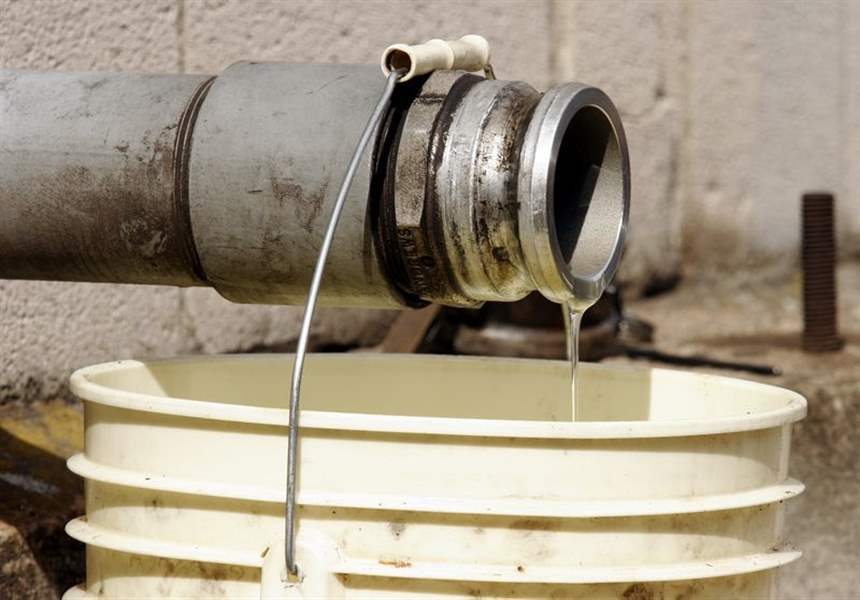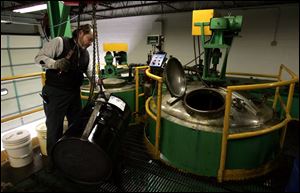
Raw truth on prices: Basic materials send factory costs higher
4/10/2005
Base oil, draining from a supply pipe, costs nearly double what it did six years ago.
wadsworth / blade

Base oil, draining from a supply pipe, costs nearly double what it did six years ago.
The cost of base oil used as the foundation for a Toledo lubricant firm's blends has nearly doubled in six years. That has caused the company to raise the price for the friction reducer it sells for use in factory machines and in municipal dump trucks and other vehicles.
The cost of acrylic a Perrysburg firm uses to make displays for stores jumped 33 percent last year and an additional 6 percent in January, with more boosts expected.
Although increasing steel costs have grabbed a lot of national attention in the last 18 months, that isn't the only commodity with a soaring price. Costs have climbed for primary metals, plastic, synthetic rubber, and more.
The prices are up because of heightened demand or because the materials are derived from petroleum, for which the price has skyrocketed. "In the last year, it's been incredible," said Jack Stiles, president of Prism Lubricants Ltd. "In particular in the last six months, it's just been crazy."
The company annually buys about 250,000 gallons of base oil, now priced at more than $2.30 a gallon, and started seeing a rise in prices about four years ago, he said.
Among the raw materials topping steel's 47 percent price increase last year were copper and nickel, posting 55 percent jumps, said David Huether, chief economist for the National Association of Manufacturers.

Jack Stiles, president of Prism Lubricants in Toledo, said the increase in oil prices he began noticing four years ago has been particularly dramatic in the last six months.
Still, consumers aren't likely to feel much of a pinch from higher steel, copper, and nickel prices, he said.
Heavy-steel-using car and appliance companies face competitive price pressures, for example, and fewer manufacturers use copper and nickel in their products than did 30 years ago, he said.
Consumers are more likely to suffer from rising costs for natural gas and other energy-related items, Mr. Huether said. Prices for natural gas rose 50 percent last year, he noted.
Parts suppliers like Toledo's Dana Corp. have taken hits to their bottom lines in the notoriously price-sensitive auto industry. Dana recently slashed its earnings expectations for this year, in part because of higher than expected steel prices.
Yet Valley Plastic Co. Inc. eventually passed costs for acrylic on to customers, who in turn will charge consumers more, said Bob Kent, sales manager for the Perrysburg business.
Some acrylic costs can be attributed to higher petroleum prices, because acrylic is derived from oil, but demand from China where manufacturers will pay more for the raw material is part of the story, he said.
"The bottom line is always the consumer gets nailed," he said.
He added about the price of the material: "They don't seem to say anything about any stability at all."
Other companies have been able to increase prices as well. Findlay's Cooper Tire & Rubber Co. increased tire prices last month because of rising costs for natural rubber - which went up 30 percent in 2004 from 2003 - as well as for synthetic rubber, chemicals, carbon black, and steel reinforcements.
Contact Julie M. McKinnon at: jmckinnon@theblade.com or 419-724-6087.